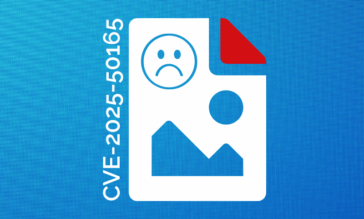The Usual Suspects: 9 Dangerous File Types Every CISO Should Know

From PDFs to PowerPoints, the formats we rely on daily are also the ones attackers use the most. And as businesses expand their digital ecosystems, these threats multiply. The result? An invisible web of risk that moves faster than traditional detection tools can keep up.
Below are the nine file types that cybercriminals weaponize most often, along with how Votiro’s advanced Content Disarm and Reconstruction (CDR) technology neutralizes them across more than 220 file formats in real-time, without compromising functionality.
1. Word & Excel Macro Files (DOCM, XLSM)
Macros are designed to simplify work by automating repetitive tasks in Word and Excel. Unfortunately, attackers discovered long ago that they can also automate infection. Malicious macros are a primary method of delivery for ransomware, spyware, and keyloggers, often disguised as invoices or reports from trusted sources.
Why they’re dangerous: Even with macro warnings enabled, legacy workflows and internal sharing habits make these files nearly impossible to ban outright.
How Votiro CDR keeps them safe: Votiro’s patented file sanitization technology removes unsafe macros while preserving legitimate business logic, ensuring automation remains intact without compromising security.
2. PDFs
Few file types are more universally trusted than PDFs. They’re used for contracts, policies, tax forms, and everything in between, which makes them ideal for attackers. A malicious PDF can carry hidden JavaScript, embedded links, or scripts that trigger malware execution the moment it’s opened.
Why they’re dangerous: Employees rarely think twice before clicking a PDF. Attackers exploit that blind trust and the persistence of outdated reader software.
How Votiro CDR keeps them safe: While unadvanced CDR vendors remove threats and provide a glorified image back to users, Votiro rebuilds every PDF from verified-safe elements while maintaining full usability, including forms and embedded content. The result is a file that looks and functions identically, minus the risk.
3. PowerPoint Presentations (PPTM)
PowerPoint is the sleeper threat of corporate file sharing. Attackers hide malicious objects behind animations, images, or clickable links that execute code during a presentation. Because slide decks are often exchanged externally, one infected file can quickly spread across multiple organizations.
How Votiro CDR keeps them safe: Presentations are sanitized at upload, download, or email delivery, ensuring all visual elements remain intact while hidden scripts are stripped away. This means, no matter where the PPT goes, it goes safely for all users and storage environments.
4. Email Files (MSG, EML)
Archived emails can be as risky as new ones. MSG and EML files often contain attachments or links that bypass scanning once saved locally or shared via file transfer. A forwarded email from years ago could carry an active payload waiting to execute.
How Votiro CDR keeps them safe: Votiro goes beyond traditional Secure Email Gateways and cleanses attachments and embedded links at the point of access, ensuring even legacy email files are free from weaponized content.
5. Compressed Archives (ZIP, RAR, 7z)
If there’s one file type that perfectly represents attacker creativity, it’s the archive. By bundling multiple files together, often encrypted or nested within other archives, threat actors can hide entire malware kits in plain sight.
Why they’re dangerous: Password protection and deep nesting prevent antivirus and EDR tools from inspecting contents, giving attackers an easy bypass.
How Votiro CDR keeps them safe: Votiro’s engine recursively unpacks, sanitizes, and rebuilds each file within an archive, even if it’s encrypted or requires credentials to access. Clean versions are delivered instantly, ready for safe use—no matter how many files are zipped within.
6. Password-Protected Files
Encryption is great for privacy and equally beneficial for attackers seeking to evade detection. A password-protected document or spreadsheet can slip past antivirus tools undetected, hiding ransomware or exfiltration scripts inside.
How Votiro CDR keeps them safe: Unlike most solutions that block or quarantine encrypted files, Votiro automatically sanitizes them. Sensitive content remains private, while hidden malware is removed discreetly behind the scenes.
7. Image Files (JPEG, PNG, GIF, SVG)
Not even your brand assets are immune. Through a method called steganography, attackers embed malicious scripts or exfiltration code inside image pixels or metadata. These scripts activate when images are uploaded, processed, or viewed on vulnerable systems.
How Votiro CDR keeps them safe: Votiro validates image structures and rebuilds them to ensure integrity, preserving visual quality while removing any embedded malicious content. This keeps the memes flowing freely.
8. Multimedia Files (MP3, MP4, MOV)
Streaming and social media have normalized sharing large media files across departments. But modern multimedia formats can contain exploitable metadata or hidden code within video players or codecs.
How Votiro CDR keeps them safe: Votiro sanitizes rich media formats in milliseconds, removing malicious data without compromising playback quality or performance.
9. CAD and Engineering Files (DWG, DXF, etc.)
In manufacturing, construction, and defense industries, design files are gold. CAD and engineering files contain proprietary blueprints and IP, making them prime targets for cyberespionage. Attackers weaponize these formats to infiltrate systems or exfiltrate sensitive data without detection.
How Votiro CDR keeps them safe: Votiro sanitizes CAD and complex file types while preserving layer data, annotations, and embedded objects, ensuring engineers can collaborate safely without disrupting their workflow.
Votiro’s Advantage: 220+ File Formats. Zero Disruption.
Votiro’s Zero Trust File Security approach is built to handle the complexity of modern content exchange. Supporting hundreds of file types, including those mentioned above, Votiro ensures that every file entering or leaving your environment is safe, usable, and clean.
By leveraging Advanced CDR technology, Votiro ensures enterprises only handle verified and safe components. No blocking. No quarantining. No workflow friction. Just fast, seamless sanitization that prevents both known and unknown malware from ever reaching an endpoint.
While attackers will always find new file types to exploit, with Votiro CDR, your business doesn’t have to predict the next one—because it’s already protected. Schedule a demo below to see how we prevent file-borne threats without slowing down a single workflow.
News you can use
Stay up-to-date on the latest industry news and get all the insights you need to navigate the cybersecurity world like a pro. It's as easy as using that form to the right. No catch. Just click, fill, subscribe, and sit back as the information comes to you.
Sign-up Here!
Subscribe to our newsletter for real-time insights about the cybersecurity industry.



